Charles and John Reymond founded their company - Valjoux - in 1901 and were responsible for some of the important and amazing chronograph movements of the last Century. In particular the Valjoux 23/72 caliber family is one of the most coveted. It was produced between 1916-1979, for over 60 years! It was widely adapted by dozens of watch manufacturers. Was utilized in some of the most important watch references in history including the Rolex Daytona, Heuer Carrera, and Patek Philippe's refs. 1518 & 2499. And after all the Valjoux 23/72 is still collectible in and of itself due to an average production of only ~15,000 pieces per year.
March 06, 2024
The Reymond Brothers and Their Chronographs - A Guide to the Valjoux 23/72

Marcus Siems @siemswatches
Collector, Author, Data Analyst
[Highlights] The Valjoux 23/72 caliber family is one of the most important chronograph movement series because:
- It was relevant and produced between 1916-1979, for over 60 years! -
- Was widely adapted by dozens of watch manufacturers -
- Is part of some of the most important watch references including the Rolex Daytona, Heuer Carrera, and Patek Philippe's refs. 1518 & 2499 -
- And is still collectible in and of itself due to an average production of only ~15,000 pieces per year -
The Vallée de Joux, a tiny valley in the Swiss Jura mountains was the eponym of one the greatest manufacturers of chronograph movements of the 20th Century. Of course I'm speaking of Valjoux - the renowned maker of movements for some of the most collectible vintage watches - in ever.
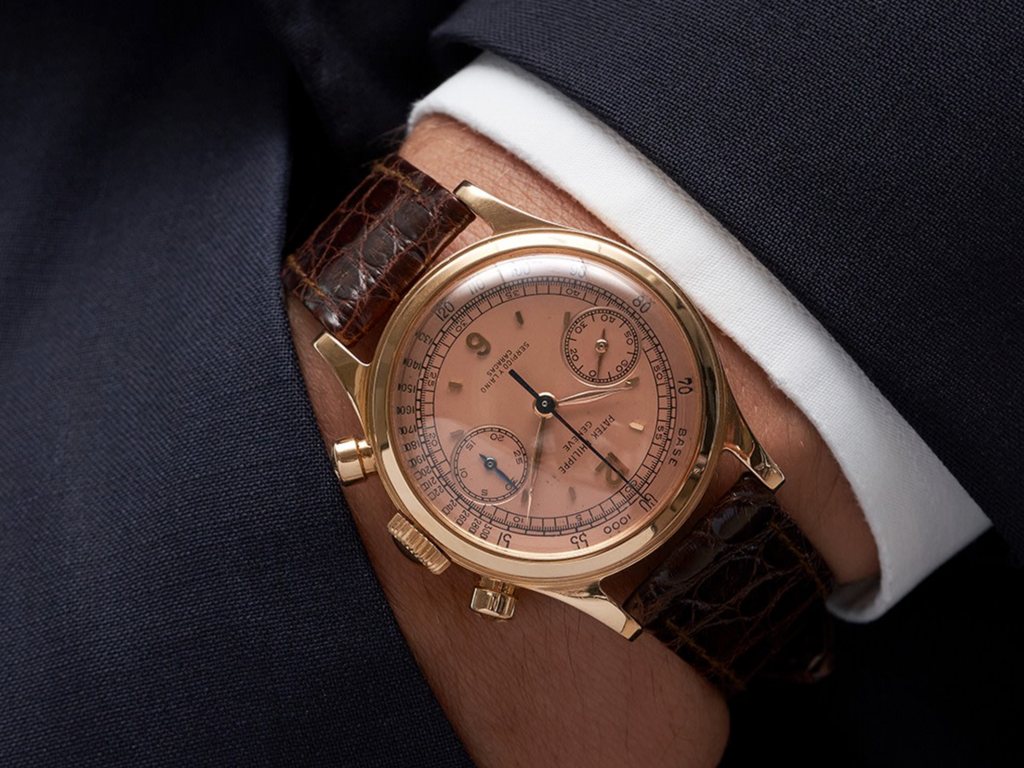 Let's start our journey through the Valjoux-powered icons - #1 the ultimate vintage chronograph design (imho) in the Patek Philippe ref. 1463 "Tasti Tondi". Photo Courtesy of Phillips.
Let's start our journey through the Valjoux-powered icons - #1 the ultimate vintage chronograph design (imho) in the Patek Philippe ref. 1463 "Tasti Tondi". Photo Courtesy of Phillips.
The company was founded in 1901 by two brothers - John & Charles Reymond[1] - in Le Bioux as Reymond Frères SA. Only in 1929 did the company change its name to the now known Valjoux SA*. From early on the two specialized in chronograph movements and debuted their Caliber 22 in 1914. The Valjoux 22 was a 14 ligne (31.3mm) movement, originally intended for pocket watches.
However, their true breakthrough came two years later in 1916 with the introduction of the manually wound Valjoux 23. The downsized 13 ligne (29.5mm) chronograph movement with column wheel and all its upgrades would go on to become the heart of chronograph watchmaking and a defining factor in this chapter of the horological history books.
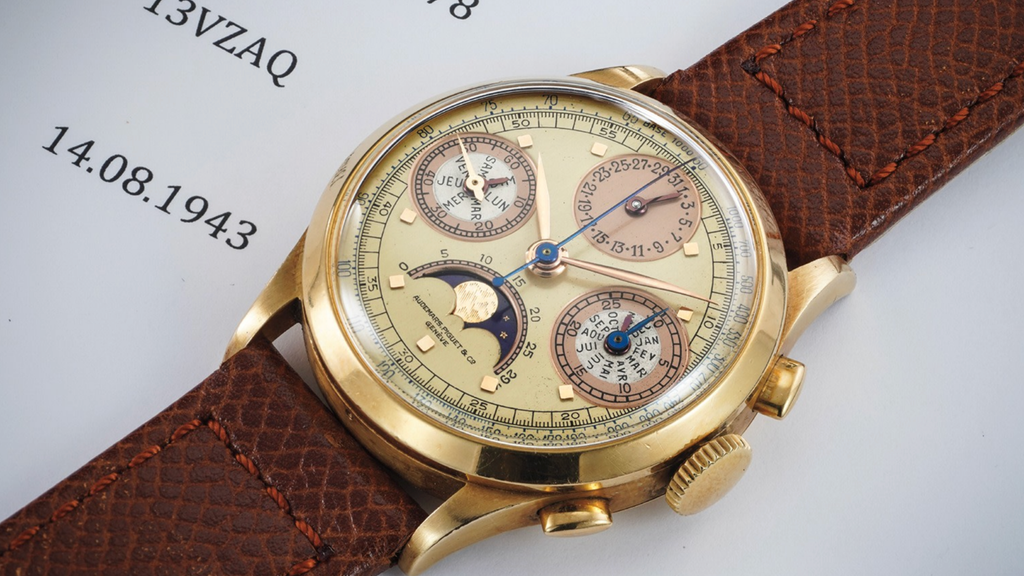 #2 of the Valjoux-powered icons - One of the earliest Audemars Piguet full calendars with chronograph. The Valjoux 23 movement was her the base for a calendar module in the model No. 831 from the 1940s. Photo Courtesy of Phillips.
#2 of the Valjoux-powered icons - One of the earliest Audemars Piguet full calendars with chronograph. The Valjoux 23 movement was her the base for a calendar module in the model No. 831 from the 1940s. Photo Courtesy of Phillips.
1) The Valjoux 23 Family Tree
The VZ23 was the base for many movements coming over the following 60+ years[2]. The trunk of this tree can be characterized by its size (29.5mm x 5.85mm), the 9-teeth column-wheel, and the 2-register layout. The registers displayed running small-seconds at 9o'clock and a 30- or 45-minute chronograph counter at 3o'clock.
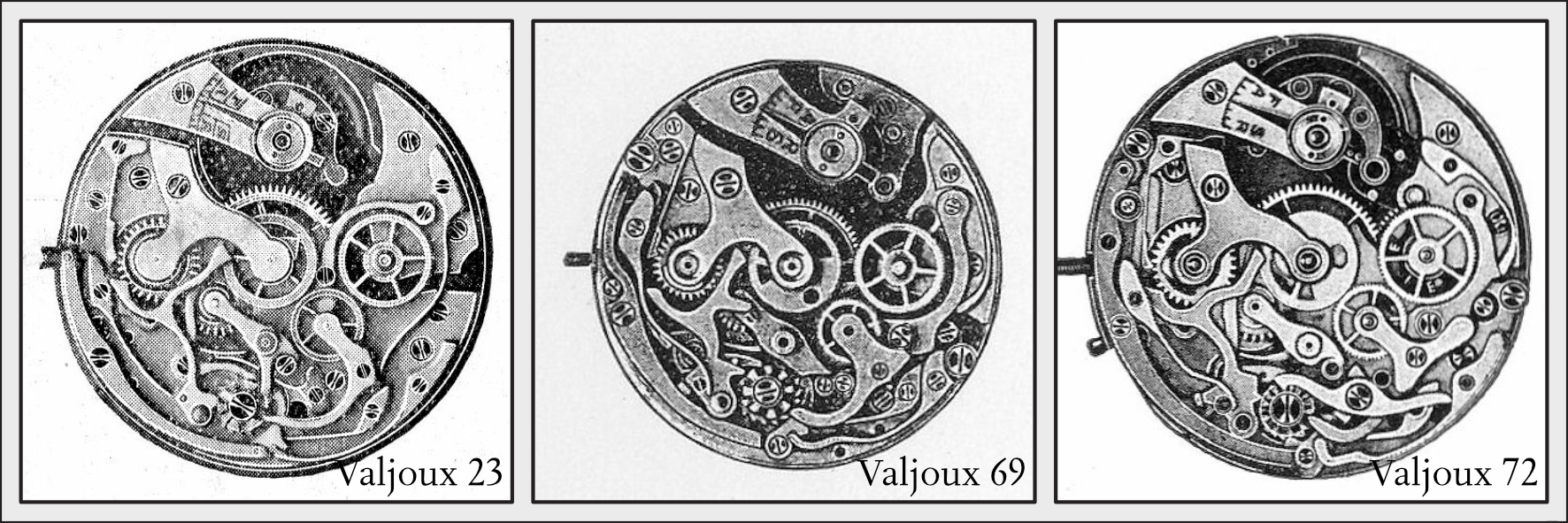 Figure 1. Schematic of the three base calibers of the Valjoux 23 family - VZ23 (left), VZ69 (middle), & VZ72 (right). Photos Courtesy of Grail Watch.
Figure 1. Schematic of the three base calibers of the Valjoux 23 family - VZ23 (left), VZ69 (middle), & VZ72 (right). Photos Courtesy of Grail Watch.
From the VZ23 trunk (1916-74) several branches developed. In a next step just a bit later a triple calendar function was added - with appertures at 11 and 1o'clock - which increased the movement height to 6.95mm[2]. Both of these movements, the VZ23 and VZ23C, were initially mono-pusher designs (as well as the VZ22). It wasn't until the 1940s that two-pushers got popular and the 1950s that the monopusher went completely out of production.
In 1936 Valjoux introduced a further downsized version of the VZ23 - the Valjoux 69 (1936-66). This caliber came in 23.35mm diameter (10.5 ligne)[2], which made it perfectly suitable for smaller pieces and for example square chronograph watches, that inherently have a larger wrist presence. But it also meant to cut the column-wheel from 9 to 8 teeth.
 The fair and square #3 - Rolex's smallest chronograph watch with a mere 26mm side-length. The reference 3529 from the late 1930s sporting the mini-sized Valjoux 69. Photo Courtesy of Monaco Legend Group.
The fair and square #3 - Rolex's smallest chronograph watch with a mere 26mm side-length. The reference 3529 from the late 1930s sporting the mini-sized Valjoux 69. Photo Courtesy of Monaco Legend Group.
However, the most important innovation came roughly 22 years after the initial VZ23. Probably in 1938 an additional register at 6o'clock was added now featuring a 12h chronograph counter - the birth of the coveted Valjoux 72 (VZH72, 1938-74, 6.95mm height)[2-3].
What followed the VZH72 were more complicated versions in the Valjoux 72C with a triple-calendar (1946-74) and an additional moon-phase in the Valjoux 88 (1947-74). You will also find non-chronograph cousins within this Valjoux family as the calibers Valjoux 78, 89, & 90. Further, Audemars Piguet converted roughly 2,000 VZ23 movements for their VZSS time-only pieces.
 Here comes #4 - Heuer's great Carrera (ref. 2448) as a gold-capped execution from the 1960s featuring the Valjoux 72. Photo from Goldammer Archives.
Here comes #4 - Heuer's great Carrera (ref. 2448) as a gold-capped execution from the 1960s featuring the Valjoux 72. Photo from Goldammer Archives.
Finally, in late 1960s Valjoux introduced an upgrade to the VZ23 and VZH72 and increased the balance wheel oscillation frequency from 2.5Hz to 3Hz (18,000 to 21,600 bph)[2-3]. This resulted in the introduction of the Valjoux 236 (1974-79) and the Valjoux 726 (1969-74). You can find the full overview over all members of the family in the list below and on Grail Watch:
 Table 1. Overview over the Valjoux 23/72 family tree. Image Courtesy of Grail Watch.
Table 1. Overview over the Valjoux 23/72 family tree. Image Courtesy of Grail Watch.
2) The Heuer Modulations - Valjoux 77 & 92
Heuer was one of the most important customers of Valjoux movements during the middle of the last Century. Heuer, themselves a chronograph manufacturing powerhouse, was in stark need for a convincing solution to implement their own oscillating pinion system and to make the Valjoux column-wheel movement more cost efficient.
They thus strongly modulated the Valjoux 23 beyond recognition. You can easily see the difference as most of the movement is no longer nicely milled components but springs. Heuer also reduced the column-wheel teething from 9 to 7. The result were the Valjoux 77 ECO (1946-50, see also [here]) and the successor Valjoux 92 (1950-60s)[4], which gladly was making up for some of the visual setback of the V77.
 You can easily see the difference in visual appeal between the Valjoux 77 (left) and the original Valjoux 23. On the right you can see a Heuer 3647T powered by a Valjoux 92. You can also see the improvement made with the VZ92 [here]. Photo from Goldammer Archives.
You can easily see the difference in visual appeal between the Valjoux 77 (left) and the original Valjoux 23. On the right you can see a Heuer 3647T powered by a Valjoux 92. You can also see the improvement made with the VZ92 [here]. Photo from Goldammer Archives.
3) Producing a Legacy
Now, one of my major interests in the world of vintage watches is musing about rarity, its importance and how we can make the distinction between rare and popular - in this case - movements. So what can we say about rarity of the Valjoux 23/72 in terms of production volume?
As a reference frame the Valjoux/ETA 7750 is one of the most common and popular chronograph movements of the 20th Century. If you do some digging you will find that during the initial production run of the Valjoux 7750 there might have been 100,000 units been made in the first year (1974)[6] and "millions" within the first years between 1974-77[5]. That's a high output for one to four years!
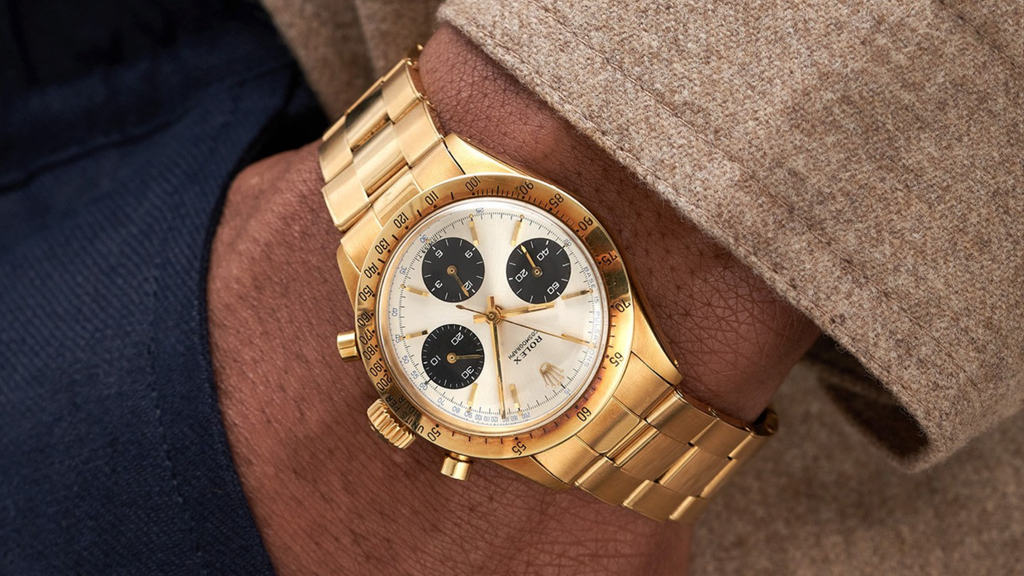 Valjoux icons #5 - Does it get more Valjoux 72 than a Rolex Daytona ref. 6239? Here, in probably the most sought after variation, the "Crazy Doc" featuring a unique pulsometer scale. This one came from the property of Eric Clapton. Photo Courtesy of Phillips.
Valjoux icons #5 - Does it get more Valjoux 72 than a Rolex Daytona ref. 6239? Here, in probably the most sought after variation, the "Crazy Doc" featuring a unique pulsometer scale. This one came from the property of Eric Clapton. Photo Courtesy of Phillips.
But the Valjoux 7750 was already quite a modern movement that was intended to be produced swiftly. So what about the Valjoux 23/72 family? Here, the situation is a whole lot different. It's arguably hard to estimate the overall production. There are two numbers floating around but both make the Valjoux 23/72 a lot scarcer than later iterations:
In one case, over the entire production run from 1916 to 1979 - so over 60 years - Valjoux made only about 125,000 VZ23 ebauches[1,7]! That is actually less than 2,000 a year. And we're speaking combined over all brands that ultimately used these ebauches. Other experts[8] estimate the production of the Valjoux 72 at close to 750,000. So including all cousins of the family we're probably speaking of less than 1 million Valjoux 23/72 ebauches ever produced****.
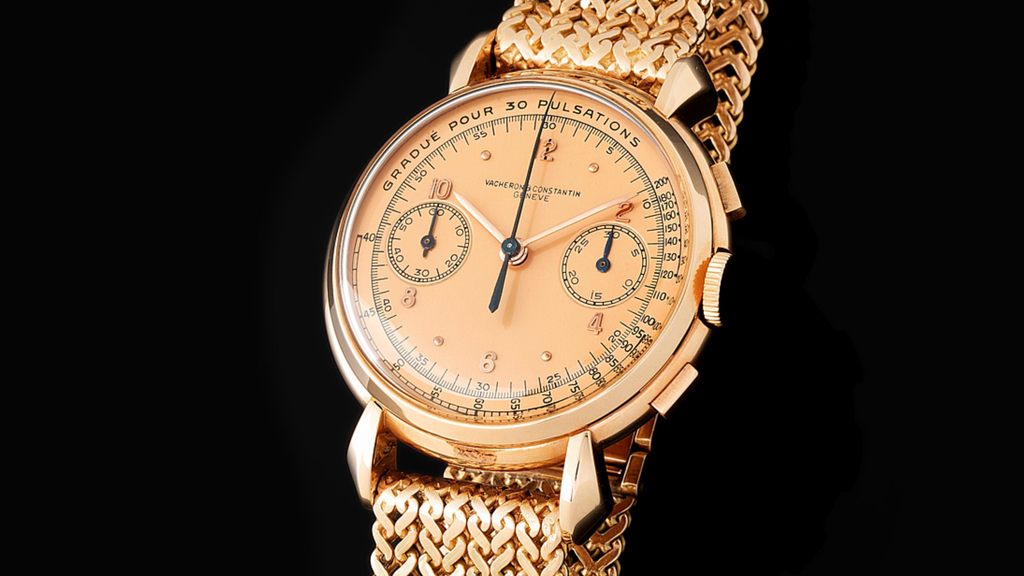 As #6 we have another of my favorite mid-Century chronograph designs - the Vacheron Constantin 4178. This one came with a UG caliber or in some cases (as the above) with a VC cal. 492 based off of the Valjoux 23. Photo Courtesy of Monaco Legend Group.
As #6 we have another of my favorite mid-Century chronograph designs - the Vacheron Constantin 4178. This one came with a UG caliber or in some cases (as the above) with a VC cal. 492 based off of the Valjoux 23. Photo Courtesy of Monaco Legend Group.
But what brands did actually use the Valjoux 23/72 family? Well, dozens... the Valjoux 72 alone was likely utilized by 17-19 brands[8]. Most prominently these movements were sent to Rolex, Heuer, Doxa, Audemars Piguet, Patek Philippe, Vacheron Constantin, and Jaeger-LeCoultre[2].
Rolex. Extremely, interesting is the distribution over these brands! If anything it's Rolex that made Valjoux great and kept the relatively pricey** column-wheel chronographs in business***. Within my calculations (see [here] [here] [here] [here]) at least 62,136 Valjoux 23/72 movements ended up within Rolex cases (in at least 40 references)! If the numbers[1,7-8] are correct that's over 7% of all Valjoux 23/72 movements.
We can further break this down into the different calibers and we see that by far most Rolex Valjoux chronographs feature the Valjoux 72 (59,847, 8%), then Valjoux 23 (1214, 1%), Valjoux 72C (729) and Valjoux 69 (346).
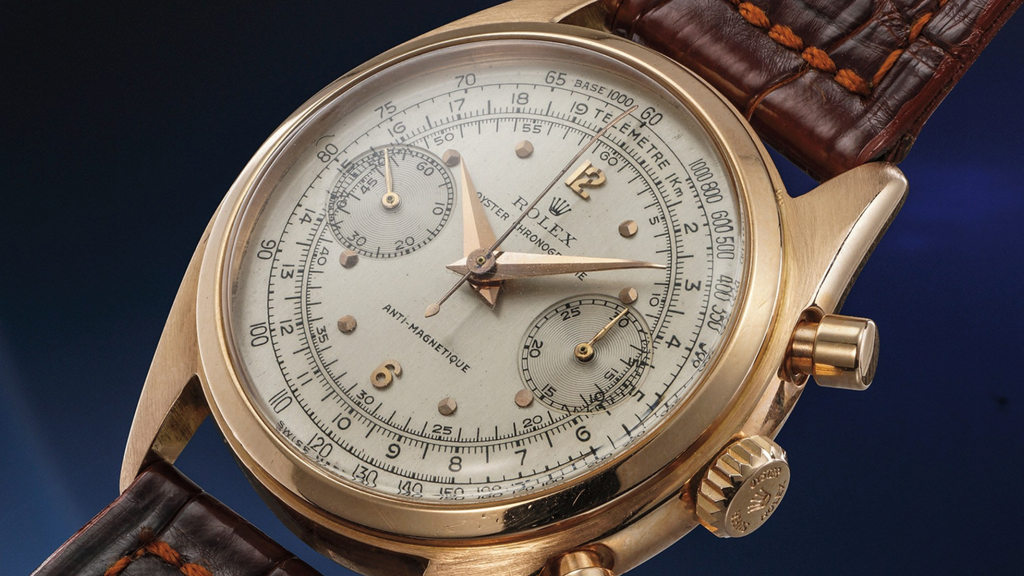 At #7 comes one of the craziest and coolest Rolex chronographs in ever. The reference 6032 comes with a slim bezel, gold case, quite some negative dial space beautifully captured by tachy- and telemeter scales ... and of course powered by the Valjoux 23. Photo Courtesy of Phillips.
At #7 comes one of the craziest and coolest Rolex chronographs in ever. The reference 6032 comes with a slim bezel, gold case, quite some negative dial space beautifully captured by tachy- and telemeter scales ... and of course powered by the Valjoux 23. Photo Courtesy of Phillips.
Holy Trinity. The use of the Valjoux 23 is well documented for Patek Philippe, Audemars Piguet and Vacheron Constantin. VC for example utilized the VZ23 ebauche as their cal. 492 over 4 references (see [here]), which had a total output of 605 (0.5%) pieces. Patek used it in various chronograph and more complicated references during the 1940s and 50s. We can estimate that Patek Philippe encased roughly 4,000 VZ23 ebauches (3%). Audemars Piguet is the best documented brand thanks to their heritage department (see "Audemars Piguet 20th Century Complicated Wristwatches"). We can see that AP produced 307 chronographs based on VZ23 ebauches. Moreover, there have been 11 perpetual calendars and about 2,000 VZSS time-only pieces - tallying around 2,300 VZ23 ebauches for Audemars Piguet (2%)[9].
 Bow down to #8 - Patek Philippe's ref. 1579 with Spider Lugs and Valjoux 23 ebauche. Photo Courtesy of The Keystone.
Bow down to #8 - Patek Philippe's ref. 1579 with Spider Lugs and Valjoux 23 ebauche. Photo Courtesy of The Keystone.
Heuer was the other major contributor to the success of particularly the Valjoux 72[10-11]. However, scholarship on production numbers is very scarce. On thing we can say with certainty is that there have been at least 5 and 13 references featuring the Valjoux 23 and 72, respectively[10-11].
4) What to make out of it?
Manually wound Valjoux chronograph movements are considered among the creme de la creme of vintage chronographs. However, the fame comes as a double-edged sword with this movement family. What I mean is that in certain offerings adding the notion that at its heart there's a Valjoux ticking can increase subjective value and will be prominently advertised. We can for example see this today with lesser known/established vintage brands like Zodiac, Wakmann, Doxa, Nivada, Wittnauer, etc.
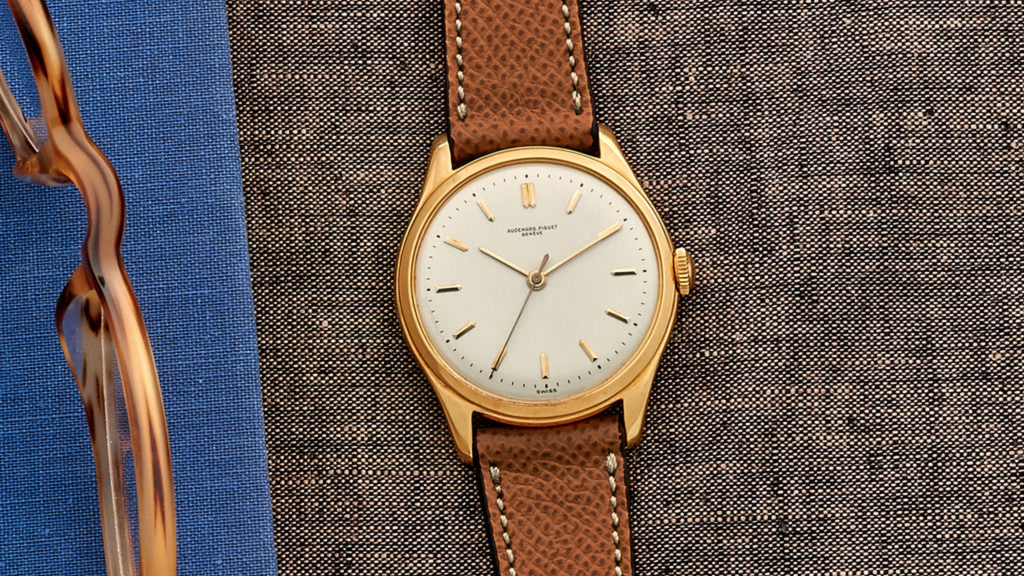 In #9 we finally got the stripped down version of the Valjoux 23 - encased within one of the sturdiest and most precise time-only movements of the last Century... An Audemars Piguet VZSS with central second. Photo Courtesy of Hodinkee.
In #9 we finally got the stripped down version of the Valjoux 23 - encased within one of the sturdiest and most precise time-only movements of the last Century... An Audemars Piguet VZSS with central second. Photo Courtesy of Hodinkee.
But there's the other side of the medal with the high-end manufacturers. Rarely you will find an explicit notion in an auction catalogue that the movement ticking within a Patek Philippe ref. 1518 or 2499 is based on a Valjoux 23! Arguably, this detail can be omitted because it might bring down the intrinsic value. But frankly, is the movement ticking within a Patek, AP or Vacheron chronograph still a Valjoux ebauche? How much do you have to modify and finish to be able to call it your own caliber?
I think the discussion needs to open up more. The Valjoux 23/72 is by itself one of the greatest chronograph movements and stayed relevant over an impressive 60 year production run, period. Yet, to understand what each watch manufacturer brought to the table of own workforce - finishing, modulating and adjusting the ebauche - beyond assembly is an important factor in establishing some form of "objective" value that lies within these watches.
 Three example Valjoux 72 chronographs from competitor movement manufacturers. A LeCoultre with cow-horn lugs (left), the Universal Geneve "Space Compax" (middle) and the Wittnauer 6002 (right). By the way, you can easily identify a watch with Valjoux caliber against other alternatives by the pusher placement. If you look closely the 2o'clock pusher is closer to the crown than the 4o'clock one. Photos Courtesy of Antiquorum & Phillips.
Three example Valjoux 72 chronographs from competitor movement manufacturers. A LeCoultre with cow-horn lugs (left), the Universal Geneve "Space Compax" (middle) and the Wittnauer 6002 (right). By the way, you can easily identify a watch with Valjoux caliber against other alternatives by the pusher placement. If you look closely the 2o'clock pusher is closer to the crown than the 4o'clock one. Photos Courtesy of Antiquorum & Phillips.
The Valjoux 9-teeth column-wheel caliber is simply marvelous. It's relevance cannot be overstated. Column-wheel competitors like the Universal Geneve 281 family or the Lemania 2310 lasted "only" for 27 and 22 years, respectively[12-13]. Further, the competitor movements weren't adapted as widely as the Valjoux. Numerous brands relied on on the Reymond product... and even Universal Geneve was among them, as they used the Valjoux 72 for some of their Compax iterations! When the competitors start to use your movement... you got something special at your hand!
* This name-company dissociation is also the reason you will find a number (corresponding to the movement type) as well as the letter/logo "R" (for Reymond brothers) on each Valjoux movement engraved right under the balance wheel.
** The column-wheel mechanism was very cost intense. For example during the 1930s and 40s they cost double as much as a cam-operated chrono ebauche (for example Venus)[5]!
*** You could probably also exchange Daytona with Heuer Carrera (at the time at least)...
**** For those interested there were 13,218 Valjoux 88 calibers produced in total between 1947-74.
References
[1] Inside The Movement: Valjoux; Tania Edwards, Collectability [Link]
[2] Valjoux 23/72 Family; Stephen Foskett, Grail Watch [Link]
[3] The Complete History of the Chronograph Movement: 1940s-1980s; Cheryl Chia, Revolution Watches [Link]
[4] Valjoux 77 Eco; Stephen Foskett, Grail Watch [Link]
[5] Rise of Venus, Legendary Chronograph Maker; Stephen Foskett, Grail Watch [Link]
[6] Valjoux 7750; Watch Wiki [Link]
[7] Deconstruction Vintage Rolex Chronograph - 1950s; Daniela Marin, The Naked Watchmaker [Link]
[8] Valjoux 72: A Chronograph in a Million; Ben Kessler, Revolution Watches [Link]
[9] The Curious Legacy of Audemars Piguet Calendar Watches Part 1; Jonathan Ho, Deployant [Link]
[10] Movements; Jeff Stein, OnTheDash [Link]
[11] Master Reference Table; Jeff Stein, OnTheDash [Link]
[12] A Short History Of Martel watch Co and Zenith Chronographs; SemperVivens, WatchUSeek [Link]
[13] The Amazing Lemania Chronograph Calibre 2310; Wei Koh, Revolution Watches [Link]
All rights on text and graphics reserved to the Author.













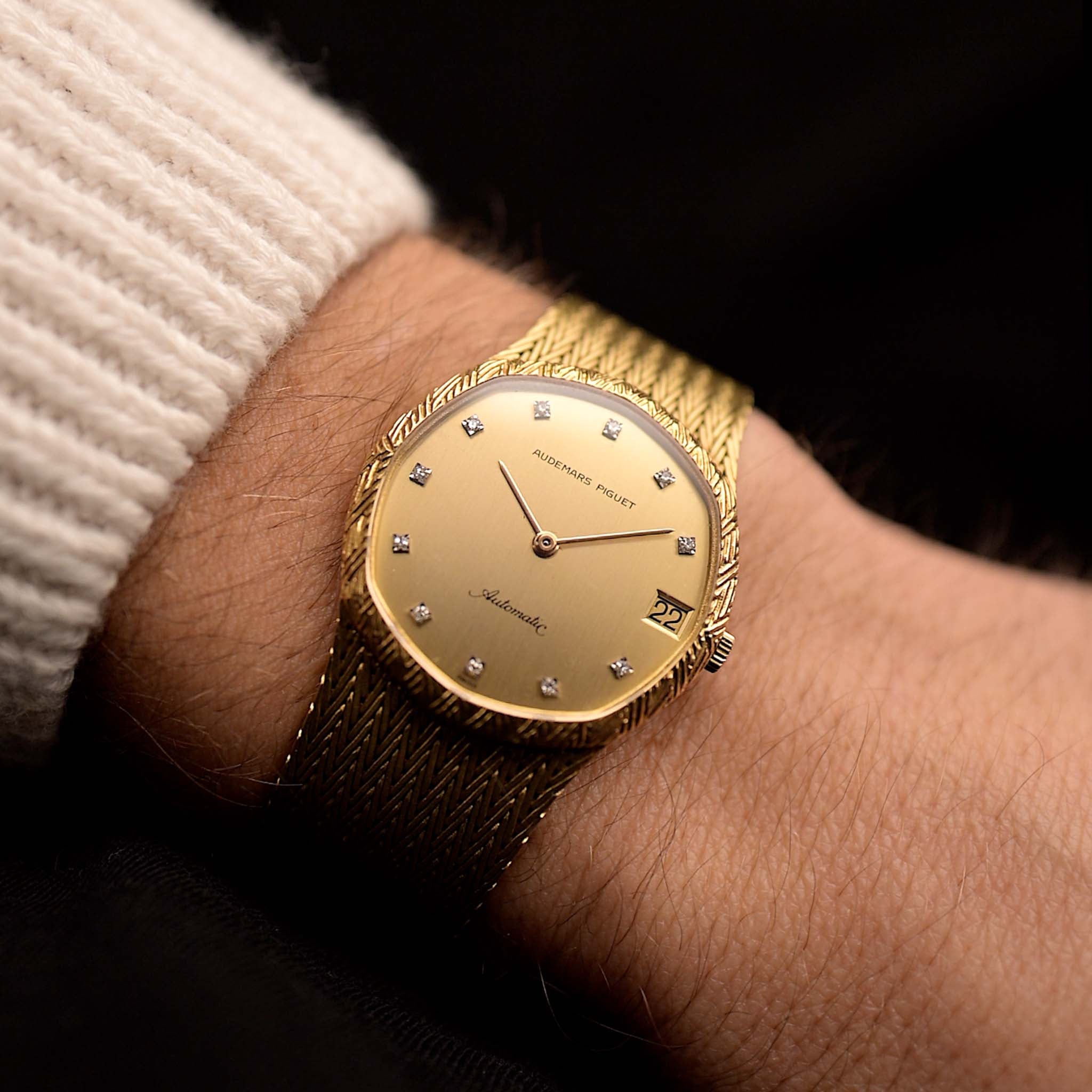














Leave a comment